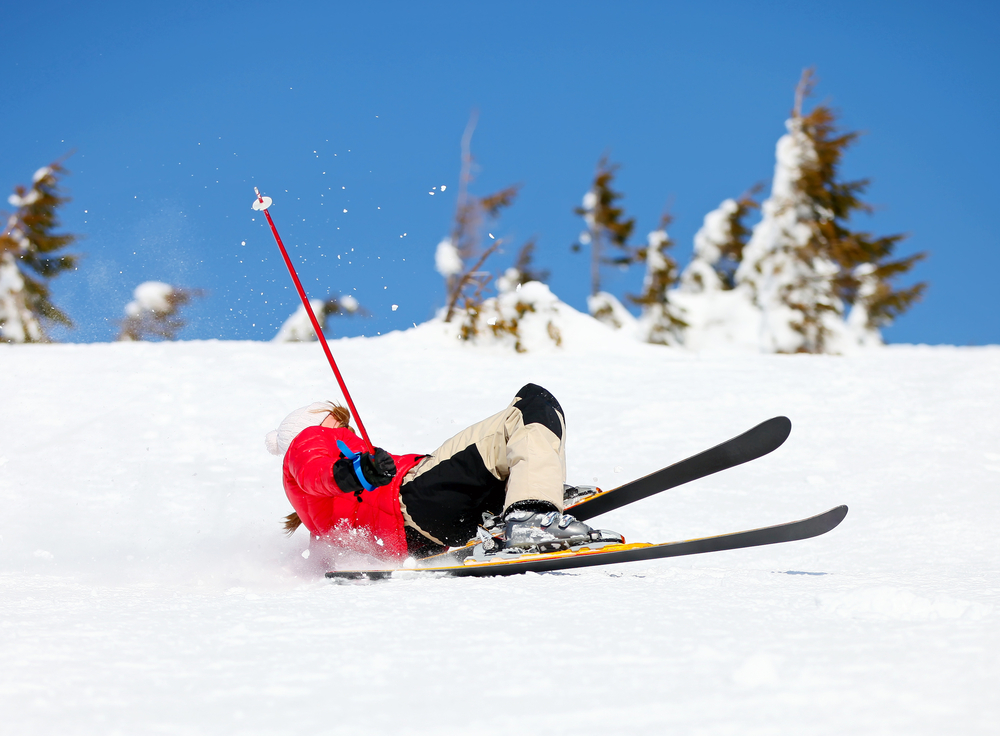
With the skiing season upon us, it is the time of year when I start to see people returning from their holidays with a variety of orthopaedic injuries.
Here I hope to give an overview of the most common injuries and how to prevent them.
What are the most common injuries?
Well this does depend a little on the skiing conditions. With more icy conditions, it is more difficult to decelerate and people tend to fall onto their hands, thus shoulder and wrist injuries are more common. Whereas with softer snow, the vast majority of injuries are to the knee, with the anterior cruciate ligament (ACL) and medial collateral ligament (MCL) most commonly injured.
Who gets injured?
Often those least prepared for their skiing holiday. Without the right preparation, it’s difficult to go from a sedentary office environment to spending several hours a day on the slopes successfully managing the physical demands of skiing. A combination of poor core strength, lack of aerobic fitness and poor proprioception and balance contribute to the vast majority of injuries.
When do most injuries occur?
The most “dangerous” time is in the afternoon, particularly half way through the ski holiday. This is when the fatigue starts to build in the untrained skier.
Why are we seeing skiers sustain more knee injuries?
We are certainly seeing more knee injuries during the skiing season and this is probably due to multiple factors:
- Ski design – More modern curved skis tend to “carve” through the snow rather than stick or drag on the snow. This often has the effect of steering the ski away from the body and twisting the knee.
- Boot design – Modern boots do a very good job of protecting the ankles and shin. The consequence of this however is that more load and rotation is transmitted to the knee.
- Poor preparation – Skiing is becoming more popular, with an increasing number of people hitting the slopes without previous experience or prior preparation.
What can I do to prevent injuries?
- Start your physical preparation at least six weeks prior to your skiing trip. Work on your core muscle strength and aerobic fitness. Regular swimming, cycling and using a cross trainer would be an excellent start.
- Take lessons if you are new to skiing. A good skiing technique minimises your risk of injury.
- Take a rest day if you start to feel the fatigue after a few days. Muscle fatigue reaches its peak 48 hours after you hit the slopes.
- Don’t drink alcohol at lunchtime – it increases your confidence and decreases your reactions, a perfect recipe for an injury!
What should I do if I sustain an injury?
Make sure that you have adequate medical insurance before you leave home so that you are covered for any necessary treatment. Most ski resorts have excellent medical facilities and are very experienced at treating skiing injuries.
If you are unlucky enough to break a bone, in the majority of cases it makes sense to have this treated (and if necessary, operated on) before you fly home.
Regarding knee injuries, in the absence of a fracture, these can largely be treated once you return home. ACL injuries are the most common knee injury and in my opinion should be treated once you have arrived home. The reason for this is that operating on a swollen, stiff knee very soon after a knee injury often results in a poor outcome. In the first few days and weeks following an ACL injury, the priority is to reduce the swelling and increase the range of motion of the knee. Surgery can be safely performed weeks or months after the initial injury.
The most important thing…
… is to properly prepare for your skiing holiday so that you can enjoy yourself and have fun on the slopes!

Mr Deepu Sethi, Consultant Orthopaedic Knee Surgeon
(Specialist interest in sports injuries and joint replacement surgery)